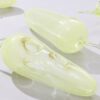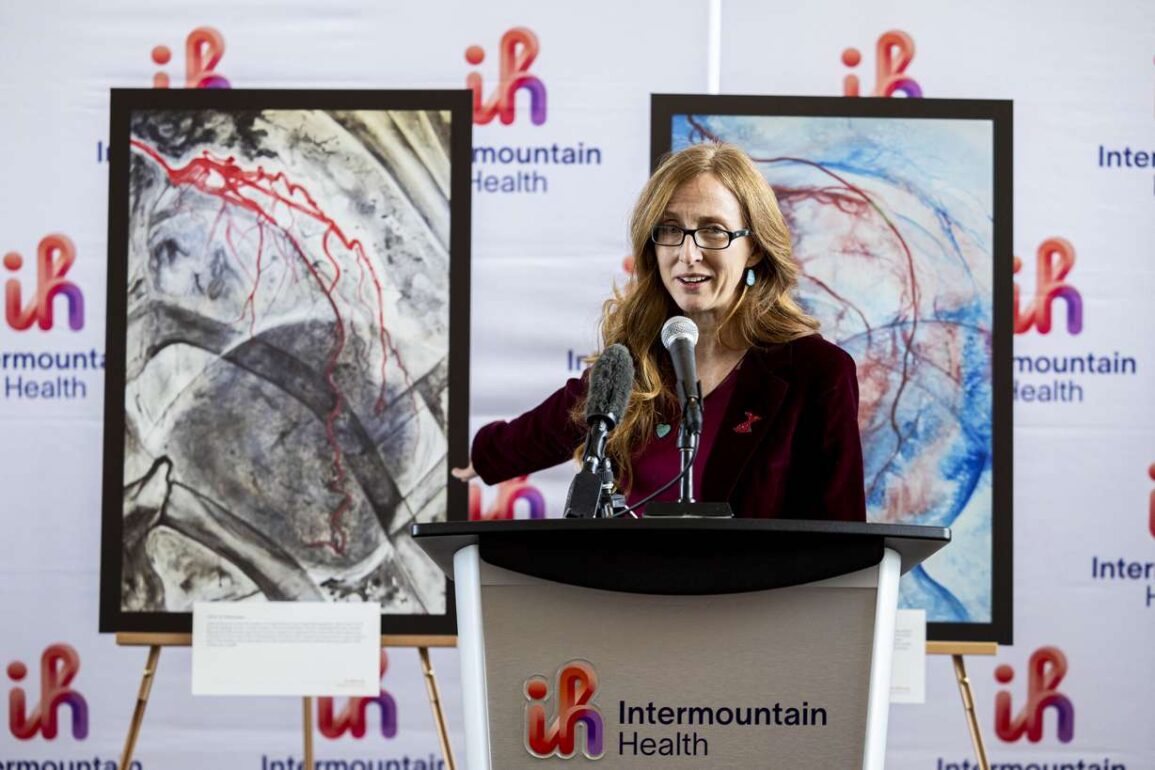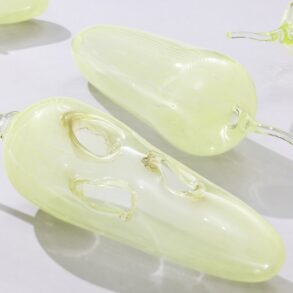MURRAY — It took Kimberleigh Collins-Peynaud six hours after feeling symptoms to seek medical care. She said they did not seem like the classical symptoms she had heard about, and the pain wasn’t radiating.
What she didn’t know at the time is that women’s symptoms are often different from men.
When she found out she was suffering a heart attack, she was shocked. She was 44 years old and considered herself in good health.
“I want to share my story so that it can possibly help other women and men of all ages so that we’re more aware of the fact that this can happen at any time to anyone no matter what state of health they’re in,” she said.
The Sandy mother of two shared her story at Intermountain Medical Center Thursday during an event to bring attention to women and heart disease. She created nine pieces of art to process her experience which will be displayed on Friday — National Go Red for Women Day with the American Heart Association when people are encouraged to wear red to spread awareness.
Dr. Kent Meredith, senior medical director for cardiology in Intermountain Health’s Canyon region, wore a red suit at the event, joking that as a redhead, a red suit is one of the best ways to bring awareness.
He said over 20 years in the heart attack program he has learned that women often have completely different signs than men when having a heart attack. Men often experience a feeling like an elephant is sitting on their chest and radiating to the left arm, but women will report a burning, discomfort, unusual weakness, anxiety, an upset stomach or just not feeling well.
“I’ve heard that 1,000 times in my 25 years in cardiology — I thought it was a flu, I thought I had the stomach flu because I felt nauseated,” he said.
Meredith said he has trained emergency room staff to consider any symptom between the nose and navel as a potential heart attack symptom — especially in women.
He encouraged people to wear red pins or clothing throughout February, Heart Awareness Month, to spark discussions about women and heart disease and invite someone to go on a walk with them in building a habit to help foster a healthier overall community.
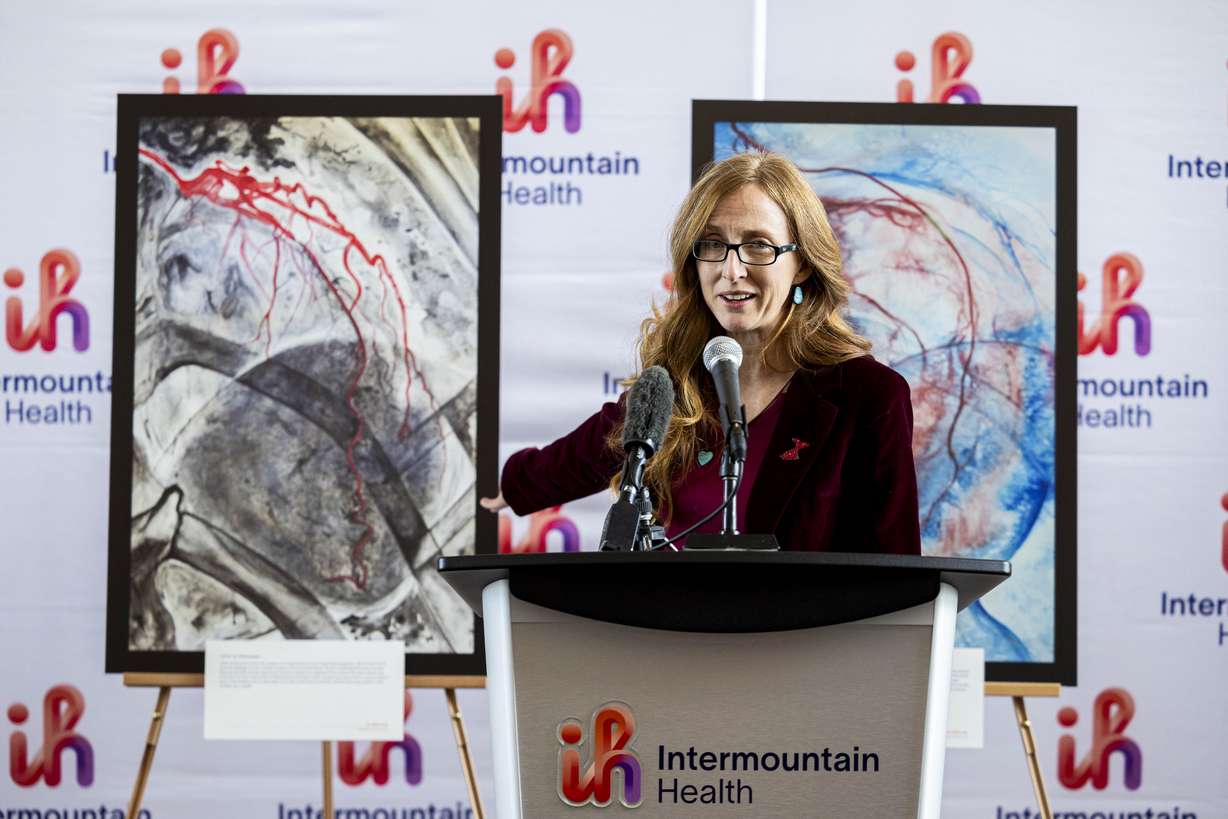
Collins-Peynaud said she learned tests revealed she had what is referred to as a widowmaker heart attack, which has only a 12% survival rate outside of a hospital.
“I felt extremely lucky. Not only did I have a heart attack that was shocking to me, but I was in the 12% of survivors, which made me question why. … I really needed to understand what was happening inside my body,” she said, noting that her mother and grandfather both died from heart attacks at young ages.
She said her artwork helped her process the thoughts, fear, uncertainty and loneliness that came after her heart attack. She created a pencil drawing of her symptoms — pain in her left arm, pain in her back, then pressure on her sternum, all in about 15 minutes.
“All of this felt very unfamiliar, unlike any other sensation that I had felt before, which started making me worry,” she said.
Collins-Peynaud encouraged people to seek medical care immediately if they feel something out of the ordinary that is concerning and to suggest others do the same. Instead, she waited after her heart attack, massaged her sore arm, did some yoga, and took her blood pressure — waiting hours to get medical care.
Her art includes a series showing what her heart might have looked like during the heart attack, after a stint was placed and after she began to heal. She also included a drawing inspired by a song about Janus, a Roman god who looked both forward and backward, saying she wants to remember her life-changing experience but also look forward.
It has now been more than a year since Collins-Peynaud’s heart attack. She said after finishing rehab where she met friends in similar situations, she started a “heart buddies” walk near the hospital for other former patients so they can continue supporting each other.
“Now, thanks to all of this, I actually feel part of a community,” she said.
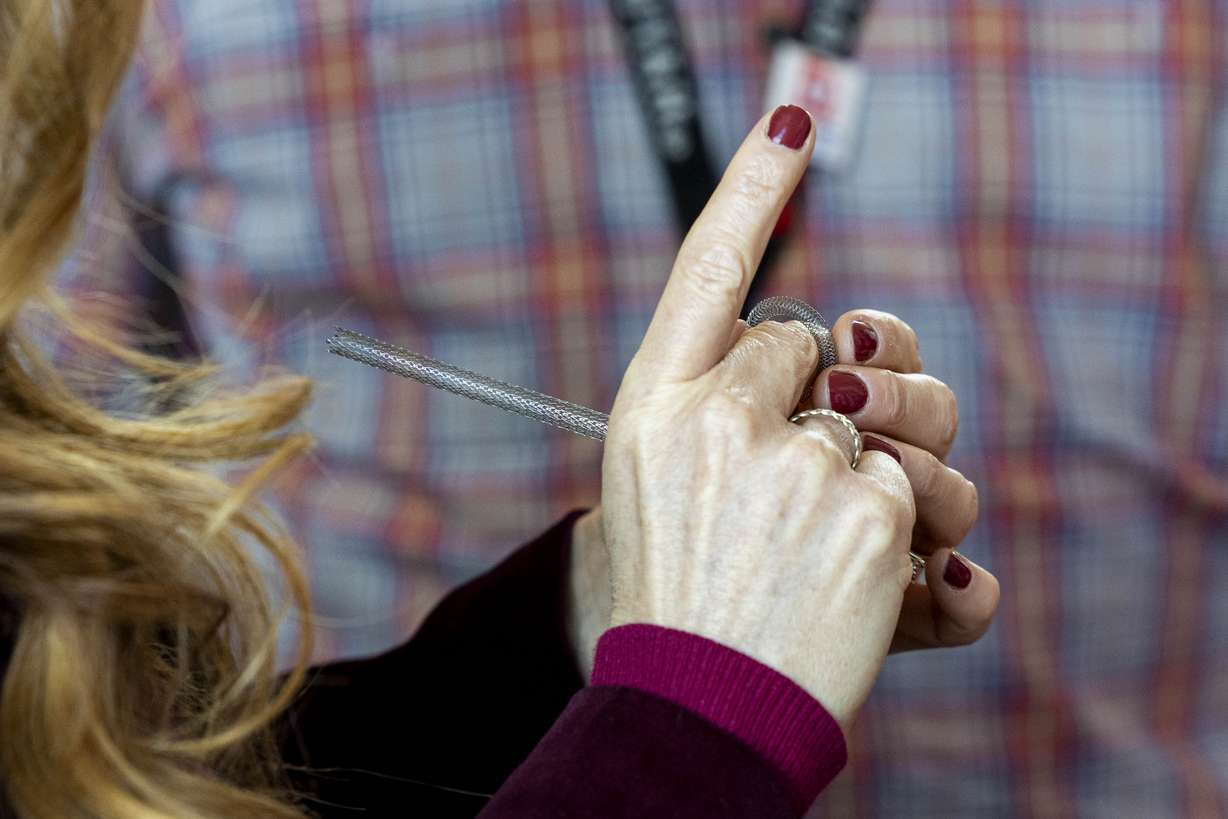
Dr. Amanda Donohue, an Intermountain Health cardiologist, said she hopes to “empower women to take charge of their cardiological health,” which she said is important at any age and stage of life.
“We’re working to get the message out to all women through programs like Go Red for Women that heart disease is their biggest health risk and leading killer, but the good news is that there’s a lot that both women and men can do to protect their heart,” she said.
She said there are many risk factors to consider: diabetes, high blood pressure or cholesterol, autoimmune disorders, kidney disease, gestational pregnancy disorders and long-time use of hormone replacement therapy.
Donohue said Intermountain Health is creating a cardiological system geared specifically for women to help provide more specialized care.
The Key Takeaways for this article were generated with the assistance of large language models and reviewed by our editorial team. The article, itself, is solely human-written.
This post was originally published on this site be sure to check out more of their content


